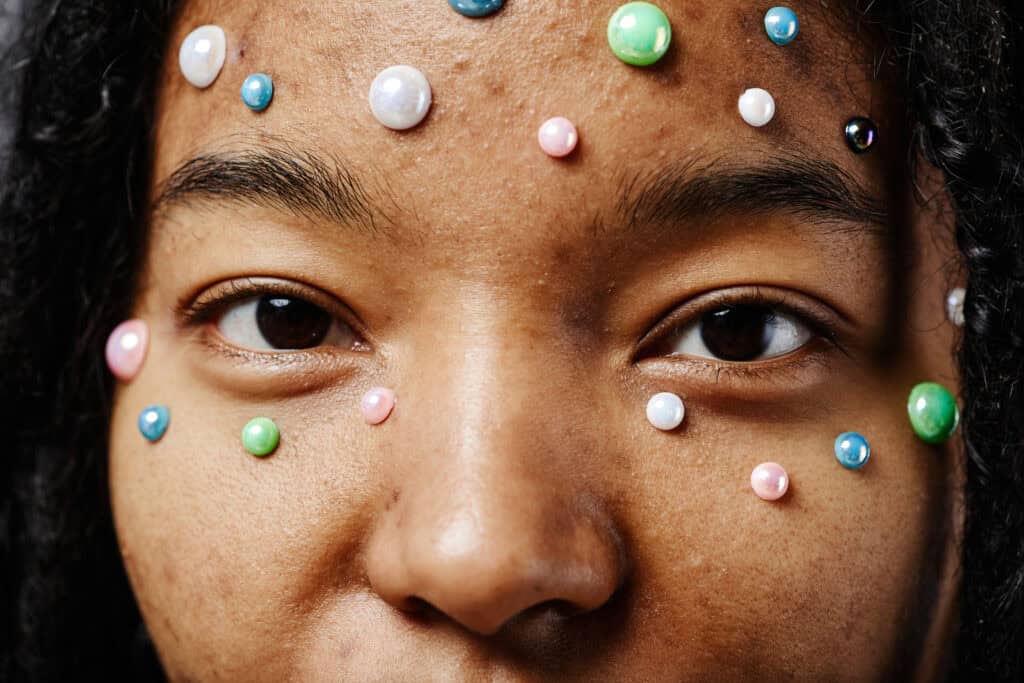What if we told you that the most innovative ideas, the sharpest solutions and the most creative breakthroughs often come from the neurodivergent minds?
Imagine a world where every mind – no matter how it works – is celebrated for its unique brilliance. Embracing neurodiversity challenges traditional perceptions of intelligence and productivity, highlighting how autism, ADHD, dyslexia, dyspraxia and other cognitive differences offer unique talents that enrich workplaces, classrooms and communities when supported with understanding and inclusivity.
Shifting the narrative from “disability” to “ability” and from “deficit” to “advantage” allows us to unlock unique potential, creativity, resilience and innovation. Research demonstrates that fostering cognitive diversity leads to higher problem-solving efficiency and innovation.

Neuroscience Insight
Did you know that cognitive diversity increases problem-solving abilities and innovation? Research by Cody B. Cox et all (2024) has shown that neurodivergent individuals often access alternative neural pathways when processing information, enabling them to think creatively, focus intensely, or perceive patterns others may miss.
For example, as highlighted in the Intelligence 5.0 report by Made by Dyslexia, autistic individuals engage in heightened perceptual processing, which supports superior attention to detail. Additionally, some studies suggest that individuals with ADHD exhibit higher levels of creative thinking, particularly in divergent thinking tasks. For instance, a study published in the Journal of Attention Disorders found that adults with ADHD reported more real-world creative achievements and generated more original ideas when motivated by competition.
These differences in neural processing are distinct pathways that expand our collective potential. When we embrace neurodivergent minds, we open doors to new ways of thinking, creating, and solving problems.
The Science of Neurodivergent Strengths
Modern neuroscience sheds light on the advantages neurodivergent individuals bring to the table. Unique brain wiring often leads to exceptional skills in pattern recognition, creativity, and visual-spatial thinking.
Autism & Pattern Recognition
Individuals on the autism spectrum often excel in tasks requiring attention to detail, logical reasoning, and systems thinking. Research published in the European Journal of Neuroscience shows that visual processing skills in autistic individuals enable them to detect nuances that others may overlook. These strengths make them invaluable in industries such as technology, engineering, and research.

ADHD & Creativity
Research by Cody B. Cox et al (2024) highlights that individuals with ADHD are known for their creative problem-solving abilities and agility, particularly in high-pressure situations. While challenges with attention persist, their rapid, divergent thinking fuels innovation in fields like entrepreneurship and creative industries.
Dyslexia & Big-Picture Thinking
Dyslexia is often associated with reading challenges, but it’s also linked to advanced visual-spatial reasoning and big-picture thinking. Some studies, like the one conducted by Giulia Giovagnoli et al., indicate that children with developmental dyslexia (DD) may struggle with visual-spatial tasks, such as mental rotation and visual-motor integration, suggesting challenges in these areas. Conversely, other research proposes that individuals with DD might possess strengths in explorative cognitive search, which could contribute to abilities like discovery and creativity. Many successful leaders in architecture, design, and business attribute their achievements to strengths in pattern recognition, big-picture thinking, and problem-solving beyond linear constraints.
Unlocking the Power of Cognitive Diversity in the Workplace
Inclusion is a driver of success. Companies that actively hire and support neurodivergent professionals outperform their competitors. A Harvard Business Review study found that neurodiverse teams solve problems faster and increase innovation.

Take SAP’s “Autism at Work” initiative, for instance. By matching autistic individuals to roles suited to their strengths, the company achieved a remarkable improvement in software testing accuracy, with some teams detecting 90% more errors than their neurotypical counterparts. Similarly, Microsoft’s Neurodiversity Hiring Program has expanded opportunities for individuals with autism, ADHD, and dyslexia, demonstrating the deep impact of inclusive practices.
Beyond the numbers, fostering neurodiversity also increases workplace culture. It teaches empathy, adaptability and teamwork. When leaders focus on strengths rather than challenges, they cultivate environments where every individual can excel. For practical tools that reduce sensory overload and protect focus, explore Creating Digital Boundaries to Protect Your Mental Space.
PAUSE AND REFLECT
Think about a time when someone approached a problem differently than you did.
How did their perspective change the outcome?
What did you learn from their unique way of thinking?
Embracing Neurodivergence Strengths: A Shift From Deficit to Advantage
Historically, neurodivergent individuals were marginalised and misunderstood, often forced to adapt to systems that ignored their needs. Today, the conversation is changing. By adopting a strengths-based approach, we move away from “fixing” neurodivergence and toward empowering its potential.
Christopher Futcher captures this shift: “Neurodivergence isn’t a weakness to fix – it’s a strength to cultivate.” The British intelligence agency GCHQ exemplifies this mindset by actively recruiting neurodivergent analysts for their pattern recognition and critical thinking abilities, contributing to national security. To see how narrative tools can inspire confidence and resilience in neurodivergent learners, read The Power of the Hero’s Journey.
This transformation requires intentional effort:
- Recognise and celebrate strengths
Shift the narrative from focusing on challenges to recognising talents. Ask, “What unique strengths does this person bring to the table?”
- Create inclusive environments
Offer tools like assistive technology, flexible workspaces and personalised accommodations. Simple changes – like quiet spaces for focus or visual aids for learning – can transform experiences for neurodivergent individuals.

- Educate teams and communities
Promote awareness about neurodiversity. Training programs can help teams understand the value of cognitive differences, fostering empathy and collaboration. To help your team manage emotional complexity with empathy and skill, read The Science of Emotional Resilience.
- Rethink hiring and learning practices
Replace traditional, one-size-fits-all methods with approaches tailored to individual strengths. Skills-based interviews, project-based assessments – and alternative teaching methods can create pathways for success.
- Celebrate authenticity
Create spaces where neurodivergent individuals feel encouraged to be their authentic selves. Representation and open conversations help dismantle stigma and inspire inclusion.
The result? A thriving workplace where neurodivergent employees feel valued and empowered.
Cultural Connection
Different cultures around the world are increasingly redefining success and innovation by recognising the contributions of neurodivergent individuals.
- In Sweden, schools have embraced a strengths-based model that supports children with cognitive differences through personalised learning plans.
- In Australia, neurodivergence is at the centre of advocacy efforts to include individuals in industries where their skills are needed most.
Additionally, Indigenous cultures worldwide have long celebrated different ways of thinking as essential to their community. For example, storytelling traditions often include individuals whose neurodivergence allows for unique memory retention or alternative perspectives. These individuals serve as “knowledge keepers,” highlighting the cultural wisdom of celebrating neurodiversity as strength.

How Embracing Neurodiversity Benefits Innovation & Productivity
The path toward embracing neurodiversity as a strength requires compassion, curiosity and intentional change. It is about creating environments where differences are not just accepted but celebrated. Education systems can shift from standardised teaching methods to personalised approaches, ensuring that neurodivergent students thrive. Workplaces can build cultures of inclusion where individuals are encouraged to leverage their strengths. To explore how families can support cognitive and emotional development at home, see How Can Parents Build Emotional Resilience in Themselves and Their Children.
Most importantly, we as individuals can commit to listening, learning, and challenging biases. Cultivating an understanding of neurodiversity can create opportunities for collaboration, empathy and progress.
Final Thoughts
Neurodiversity challenges us to rethink what strength looks like. It reminds us that every brain, every perspective, has value and invites us to celebrate the unique ways individuals think, create, and contribute to the world. When we embrace this diversity, we unlock innovation, compassion, and collective growth.

Reflect
How can you embrace neurodiversity in your daily life?
Take a moment to reflect and share this piece with others who are passionate about inclusion and innovation.
References:
- Cox, C. B., Krome, L. R., & Pool, G. J. (2024). Breaking the sound barrier: Quiet spaces may also foster inclusivity for the neurodiverse community. Industrial and Organizational Psychology, 17(3), 350–352. https://doi.org/10.1017/iop.2024.28
- Gujar, H. (2024). Unlocking Potential: The strategic advantage of neurodiversity in the workplace. ideas.repec.org. https://ideas.repec.org/a/bhx/ojjbsm/v9y2024i2p1-7id1798.html
- Neurodiversity as a competitive advantage. (2021, August 27). https://hbr.org/2017/05/neurodiversity-as-a-competitive-advantage
- Made By Dyslexia. (2020). Intelligence 5.0: A new school of thought rethinking the intelligence needed in industry 5.0. In Made by Dyslexia. https://madebydyslexia.org/MBD-Intelligence-5.0-Report.pdf?_gl=1*eejemn*_ga*MTQ1NTI0MTMwNC4xNzM0ODE3Nzgz*_ga_B9332T9HS9*MTczNDgxNzc4My4xLjAuMTczNDgxNzc4My4wLjAuMA
- Boot, N., Nevicka, B., & Baas, M. (2017). Creativity in ADHD: Goal-Directed motivation and domain specificity. Journal of Attention Disorders, 24(13), 1857–1866. https://doi.org/10.1177/1087054717727352
- Giovagnoli, G., Vicari, S., Tomassetti, S., & Menghini, D. (2016). The role of Visual-Spatial Abilities in Dyslexia: Age differences in Children’s reading? Frontiers in Psychology, 7. https://doi.org/10.3389/fpsyg.2016.01997
- Taylor, H., & Vestergaard, M. D. (2022). Developmental dyslexia: disorder or specialization in exploration? Frontiers in Psychology, 13. https://doi.org/10.3389/fpsyg.2022.889245
This piece was written for you by
Making complex ideas accessible and sparking meaningful conversations.
